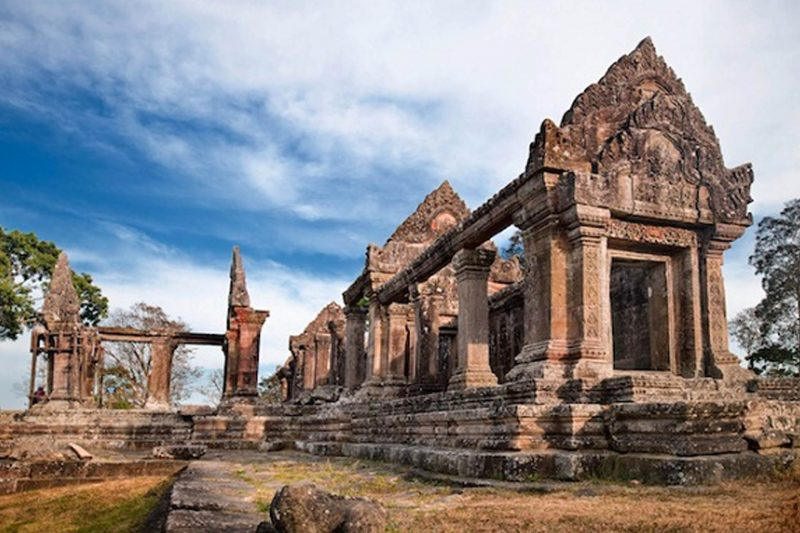In the early hours of July 24–25, 2025, fresh clashes erupted along the forested border between Thailand and Cambodia. What began as a drone reconnaissance mission quickly escalated into a violent exchange of fire. The focus of the tension? An ancient Shiva temple hidden deep in the Dangrek Mountains. See Times of India’s story here.
At the heart of the dispute is a cluster of 12th-century Hindu temples, especially the Ta Muen Thom temple and the more famous Preah Vihear temple. Both are dedicated to Lord Shiva, and both sit near or right on the sensitive Thailand-Cambodia border.

Preah Vihear is perched on a dramatic 525-meter cliff and is one of the most striking architectural examples of the Khmer Empire. While it is now on Cambodian territory, just meters away lies Thai soil—and that thin sliver of land has sparked decades of tension.
The latest skirmish took place near Ta Muen Thom, which is situated in Thailand’s Surin Province but very close to the Cambodian line. Reports suggest that after Cambodian troops flew surveillance drones near Thai posts, fighting broke out, leaving at least a dozen people dead and displacing over 40,000 civilians.
The question many are asking is: why are ancient temples causing modern bloodshed?
Colonial-Era Borders, Modern Fault Lines
The roots of this conflict go back to the early 1900s, when France, then the colonial ruler of Cambodia, signed boundary treaties with Siam (now Thailand). These treaties were vague, and while a 1907 map placed Preah Vihear clearly inside Cambodian territory, Thailand later disputed that placement.
In 1962, the International Court of Justice ruled in Cambodia’s favor and ordered Thailand to withdraw. The judgment sparked protests in Thailand, where many viewed it as a national loss.
In 2013, the ICJ reaffirmed its earlier decision and further clarified that the surrounding area around Preah Vihear also belonged to Cambodia. Despite this, tensions have simmered ever since, occasionally flaring up like they did this week.
Sacred Architecture Meets Political Borders
Preah Vihear and Ta Muen Thom are not just religious sites; they are living relics of India’s cultural spread across Southeast Asia. These temples were built during the Khmer Empire’s golden age, when Sanatan Dharma flourished far beyond the Indian subcontinent.
Interestingly, the Ta Muen Thom temple has a rare south-facing sanctum—most Khmer temples traditionally face east. Its garbhagriha still contains a naturally formed Shivling, and the site has long attracted local pilgrims from both countries.
Yet, because of their location, these temples have become militarized zones. In 2008, Cambodia successfully had Preah Vihear recognized as a UNESCO World Heritage Site, triggering another wave of backlash in Thailand. Soldiers on both sides have built outposts near the temples, and incidents like singing national anthems or raising flags have become acts of provocation.
What can we do?
As a platform rooted in the eternal wisdom of Sanatan Dharma, Apna Sanatan stands not for ownership, but for preservation. These temples—though caught in geopolitical crossfire—are part of a shared heritage. They represent a time when dharma knew no borders, and when art, devotion, and architecture were a unified language across Asia.
We believe that these conflicts cannot be resolved through force. It is time for scholars, spiritual leaders, and regional citizens to speak louder than armies. Let these ancient stones remain what they were always meant to be: places of peace, not pawns of war.
We pray for calm. We pray for clarity. And most of all, we pray that the spirit of Lord Shiva, who transcends boundaries and egos, may bring wisdom to the leaders of both nations.



